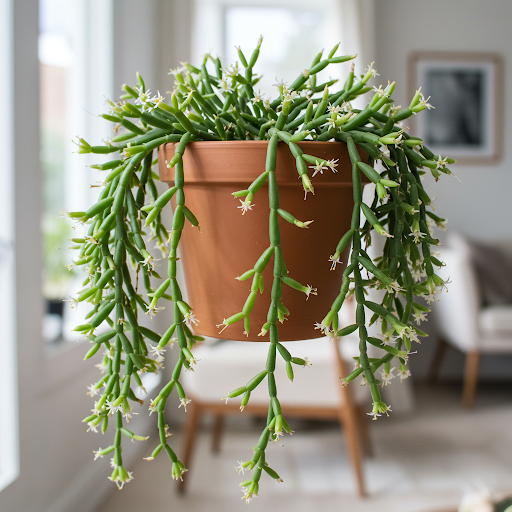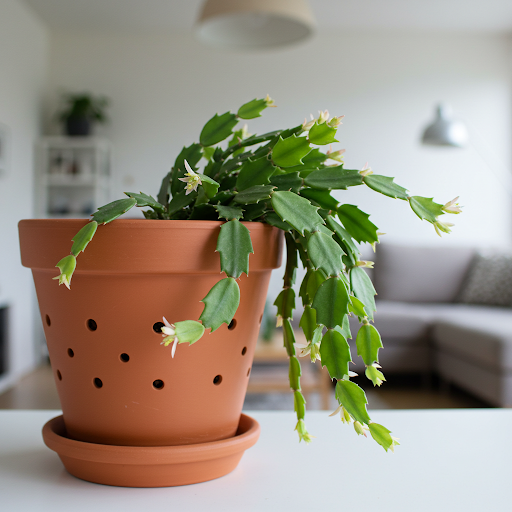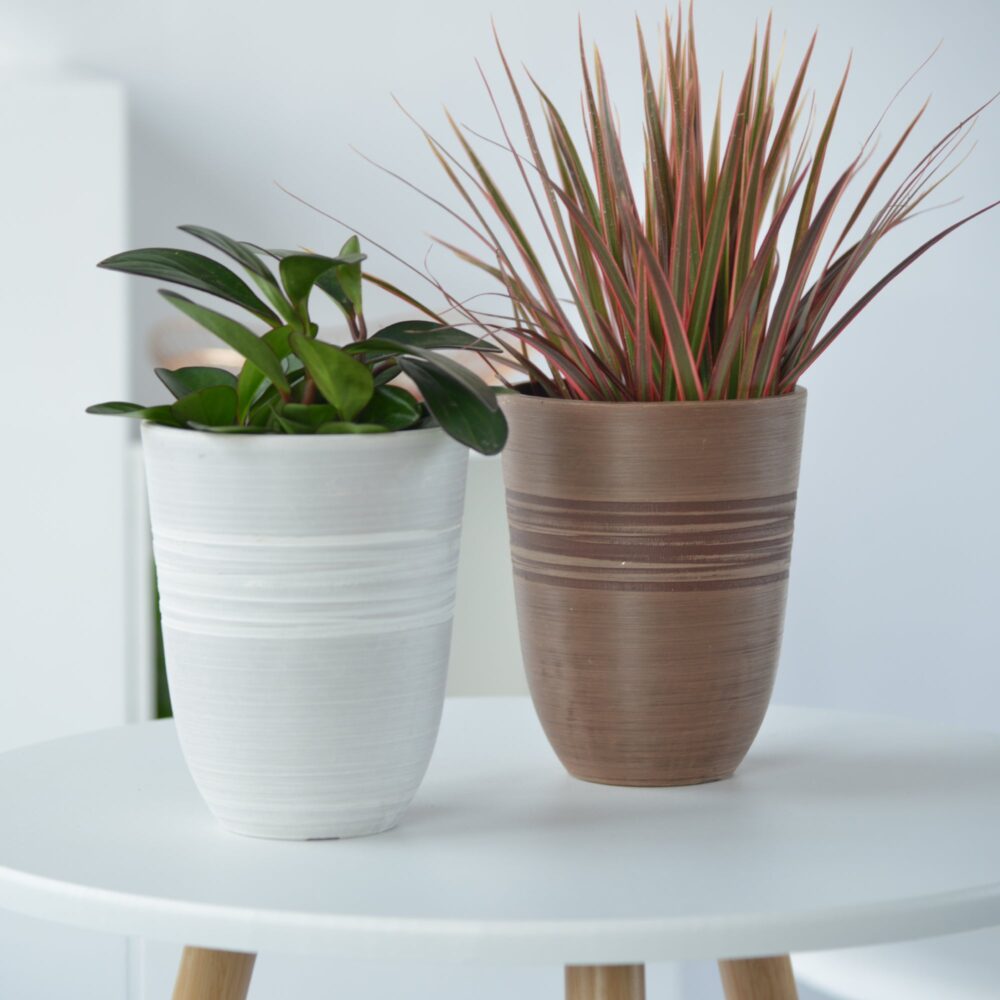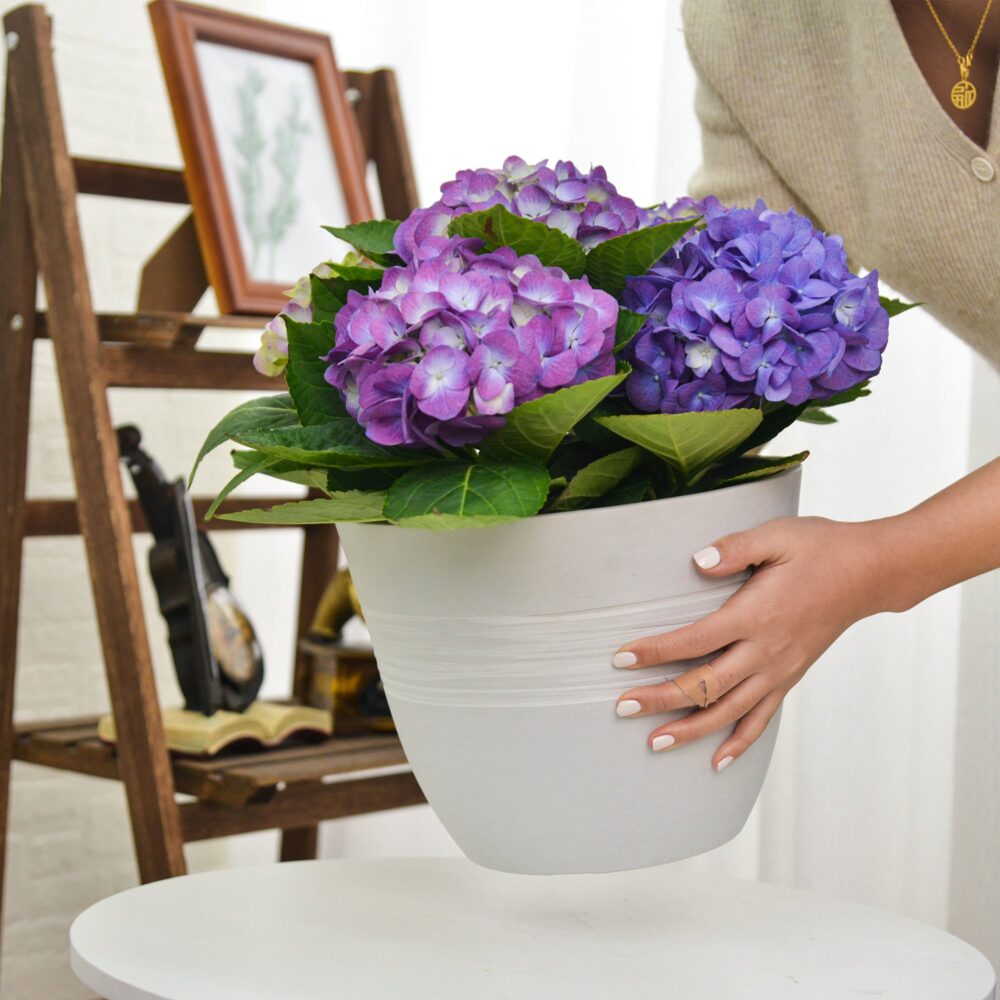Mistletoe Cactus Indoors: The Complete Guide to Growing Rhipsalis Cereuscula at Home
Looking to cultivate unique, cascading greenery with delicate, bead-like stems in your indoor plant collection? Mistletoe Cactus, scientifically known as Rhipsalis cereuscula, is an epiphytic cactus prized for its graceful, branching stems and charming, small white flowers. These intriguing and relatively easy-to-grow cacti, native to South America, are perfect for adding a touch of bohemian elegance and low-maintenance greenery to your indoor spaces. This comprehensive guide will provide you with everything you need to know to grow Rhipsalis cereuscula indoors, from understanding its epiphytic nature to mastering essential care techniques for a thriving and beautifully cascading Mistletoe Cactus in your home.

Mistletoe Cactus
What is Mistletoe Cactus (Rhipsalis cereuscula)?
Rhipsalis cereuscula, commonly known as Mistletoe Cactus, Chain Cactus, or Coral Cactus, is a popular species within the Rhipsalis genus, a group of epiphytic cacti known for their spineless, often pendant stems. Rhipsalis cereuscula is celebrated for its delicate, branching stems composed of small, cylindrical segments that resemble chains or mistletoe berries. It produces small, creamy white, bell-shaped flowers along its stems, followed by small, white or pinkish berry-like fruits. Mistletoe Cactus is known for its graceful, cascading growth habit, low-maintenance nature, and epiphytic lifestyle, making it a unique and appealing houseplant.
Can Mistletoe Cactus (Rhipsalis cereuscula) Thrive Indoors?
Yes, Mistletoe Cactus (Rhipsalis cereuscula) thrives exceptionally well indoors and is a rewarding plant for home cultivation, especially for those seeking low-maintenance succulents with a unique appearance. Its preference for bright, indirect light, moderate humidity, and well-draining conditions aligns well with typical indoor environments. With proper care, Mistletoe Cactus will grow into a beautiful, cascading plant, adding a touch of natural elegance to your home.
Ideal Indoor Growing Conditions for Mistletoe Cactus (Rhipsalis cereuscula):
- Varieties of Mistletoe Cactus (Rhipsalis cereuscula): While Rhipsalis cereuscula is the primary species grown as Mistletoe Cactus, there aren’t many distinct cultivars specifically for this species. Variations may occur in stem segment size and overall growth habit among individual plants. Ensure you are purchasing Rhipsalis cereuscula to ensure you are getting a true Mistletoe Cactus.
- Light: Mistletoe Cactus prefers bright, indirect light. In their natural rainforest habitat, they grow in dappled shade under the canopy of trees. Indoors, they thrive in locations that receive bright, filtered sunlight or indirect light for most of the day. East or north-facing windows are often ideal. West or south-facing windows can work if the light is diffused with sheer curtains or if the plant is placed further away from the window to avoid intense direct sun. Direct, intense sunlight can scorch the delicate stems, causing them to turn yellow or reddish. Insufficient light can lead to weak, etiolated growth and reduced flowering.
- Soil: Mistletoe Cactus needs very well-draining soil that retains some moisture. Use an epiphytic cactus mix, orchid mix, or a well-draining succulent mix. You can also create your own mix using a combination of peat moss, perlite, orchid bark, and a bit of potting soil or coco coir to provide excellent drainage, aeration, and slight moisture retention. Avoid heavy, compact soils that retain too much water.
- Watering: Mistletoe Cactus prefers moderate watering during the growing season (spring and summer) and reduced watering in fall and winter. Water when the top inch of soil is dry. Water thoroughly until water drains out of the drainage holes. Allow the soil to dry out slightly between waterings, but do not let it dry out completely for extended periods, especially during the growing season. Mistletoe Cactus is more tolerant of slight underwatering than overwatering. Overwatering and soggy soil can lead to root rot, which is a common issue with cacti. Reduce watering significantly in fall and winter when growth slows down. Watering frequency will vary depending on light levels, temperature, humidity, and pot size. Check soil moisture regularly. Use room temperature water.
- Temperature: Average room temperatures between 65°F to 75°F (18°C to 24°C) are ideal. Mistletoe Cactus is comfortable in typical household temperatures. Avoid exposing them to temperatures below 50°F (10°C) or sudden temperature fluctuations and cold drafts. They can tolerate slightly warmer temperatures in summer, but avoid extreme heat.
- Humidity: Mistletoe Cactus prefers moderate to high humidity, mimicking its native rainforest environments. Aim for humidity levels of 50-70% or higher. While they are cacti, they are epiphytic rainforest cacti and appreciate higher humidity than desert cacti. Increase humidity by:
- Misting Regularly: Mist the stems frequently with room temperature water, especially in drier indoor environments.
- Pebble Trays: Place pots on trays filled with pebbles and water (water level below the pot base).
- Humidifier: Use a room humidifier, especially during dry seasons or winter heating.
- Grouping Plants: Grouping Mistletoe Cactus with other humidity-loving plants can create a more humid microclimate.
- Bathroom (if suitable light): A well-lit bathroom can be a suitable location due to naturally higher humidity.
Planting Your Mistletoe Cactus (Rhipsalis cereuscula) Indoors:
- Starting from Cuttings or Potted Plants: The easiest way to start growing Mistletoe Cactus indoors is to purchase established potted plants from nurseries, garden centers, or online retailers specializing in cacti and succulents. They can also be easily propagated from stem cuttings.
- Propagation from Stem Cuttings: Take stem cuttings (several inches long) and allow the cut ends to callus over (dry out) for a few days. Then, plant the cuttings in moist, well-draining cactus mix. Rooting typically occurs relatively easily within a few weeks.
- Planting Time: Mistletoe Cactus can be planted or repotted at any time of year indoors, but spring or early summer, at the start of the growing season, is generally recommended for optimal establishment and growth.
Choosing the Right Pots for Indoor Mistletoe Cactus (Rhipsalis cereuscula):
- Suitable Pot Types: Select pots with excellent drainage and good aeration. Terracotta pots, ceramic pots, or hanging baskets are all suitable. Terracotta pots are often favored as they are porous and help the soil dry out more quickly, reducing the risk of overwatering. Hanging baskets are excellent for showcasing their cascading growth habit.
- Drainage: Drainage is essential for Mistletoe Cactus to prevent root rot. Ensure your chosen pot has drainage holes at the bottom. You can also add a layer of gravel or pot shards at the base of the pot to improve drainage.
- Pot Size: Choose a pot that is appropriately sized for the current size of the plant and allows for some growth. Mistletoe Cactus has relatively shallow root systems. Select pots that are not excessively large. For smaller plants, start with pots that are 4-6 inches in diameter. Mature Mistletoe Cactus, especially when grown in hanging baskets, can utilize larger containers.
- Potting Mix: Use an epiphytic cactus mix, orchid mix, or well-draining succulent mix as described earlier.
Essential Care Tips for a Thriving Indoor Mistletoe Cactus (Rhipsalis cereuscula):
- Watering Schedule: “Water Moderately, Allow Soil to Slightly Dry Between Waterings”. Water when the top inch of soil is dry. Allow the soil to slightly dry out between waterings, especially in fall and winter. Avoid overwatering and soggy soil.
- Light Management: Bright Indirect Light is Ideal. Provide bright, indirect light. Avoid direct, intense sun.
- Humidity is Beneficial: Maintain moderate to high humidity for optimal stem health and growth. Misting, pebble trays, or humidifiers are beneficial, especially in dry indoor air.
- Fertilizing: Light Feeding During Growing Season. Mistletoe Cactus benefits from light fertilization during the growing season (spring and summer) to support its growth and flowering. Fertilize every 4-6 weeks during the growing season with a diluted balanced liquid fertilizer (half strength) or a fertilizer specifically formulated for cacti and succulents. Follow package instructions carefully and avoid over-fertilizing. Reduce or stop fertilizing during the fall and winter dormant period.
- Pruning (Minimal): Minimal pruning is typically needed. You can trim back any dead or damaged stems to maintain a tidy appearance. Pruning can also encourage branching.
- Repotting Schedule: Repot Mistletoe Cactus every 2-3 years, or when it becomes root-bound or the potting mix is depleted. Repot in spring or early summer. They are relatively slow-growing and do not need frequent repotting.
- Pest and Disease Control: Mistletoe Cactus is generally relatively pest-resistant. Mealybugs and spider mites can occasionally occur. Root rot is the most common disease issue, caused by overwatering and poor drainage. Ensure proper drainage, appropriate potting mix, and avoid overwatering to prevent root rot. Treat any pest infestations promptly with insecticidal soap or rubbing alcohol.
Popular Mistletoe Cactus Forms (within Rhipsalis cereuscula):
- Rhipsalis cereuscula (Standard Mistletoe Cactus) – The main species grown.
- Variations may occur in stem segment size and branching patterns among different sources.

Mistletoe Cactus
In Summary:
Growing Mistletoe Cactus (Rhipsalis cereuscula) indoors is a rewarding way to bring unique, cascading beauty and low-maintenance charm to your home. Their delicate, bead-like stems and graceful growth habit make them captivating houseplants, especially for hanging baskets or displaying on shelves where they can cascade. By providing bright, indirect light, well-draining cactus mix in terracotta pots or hanging baskets, watering moderately and allowing the soil to slightly dry between waterings, and maintaining moderate to high humidity, you can easily cultivate thriving and beautiful Mistletoe Cactus indoors and enjoy their delicate elegance year after year.
For more detailed botanical information and to explore the diversity of the Rhipsalis genus, you can visit the Wikipedia page on Rhipsalis.
Important Note: Mistletoe Cactus (Rhipsalis) is considered non-toxic to humans and pets, making it a safe choice for households with children and animals. However, it’s always best to keep houseplants out of reach of pets and children who may be tempted to ingest them. The primary care consideration with Mistletoe Cactus is avoiding overwatering, which is a common mistake with cacti and succulents.
k2-21G
By greenship|2024-08-13T06:17:26+00:00August 13, 2024|Categories: Hand-carving Series|
Plant Pots 6 inch 8 inch 10 inch for Indoor Plants, Set of 3 Modern Decorative Planter ts with Drainage Hole, Decorative Flower Pots
By greenship-seo|2025-04-10T06:39:28+00:00January 14, 2025|Categories: Hand-carving Series|Tags: Decorative Flower Pots|
20T
By greenship|2024-08-13T06:42:22+00:00August 13, 2024|Categories: Hand-carving Series|
11V
By greenship|2024-08-13T03:05:48+00:00August 13, 2024|Categories: Hand-carving Series|
Planter for Indoor Outdoor Plants, Set of 2 Modern Decorative Plant Pots with Drainage Hole, Decorative Flower Pots
By greenship-seo|2025-01-14T12:26:44+00:00January 14, 2025|Categories: Hand-carving Series|Tags: Decorative Flower Pots|
HS
By greenship|2024-08-13T06:45:17+00:00August 13, 2024|Categories: Hand-carving Series|






